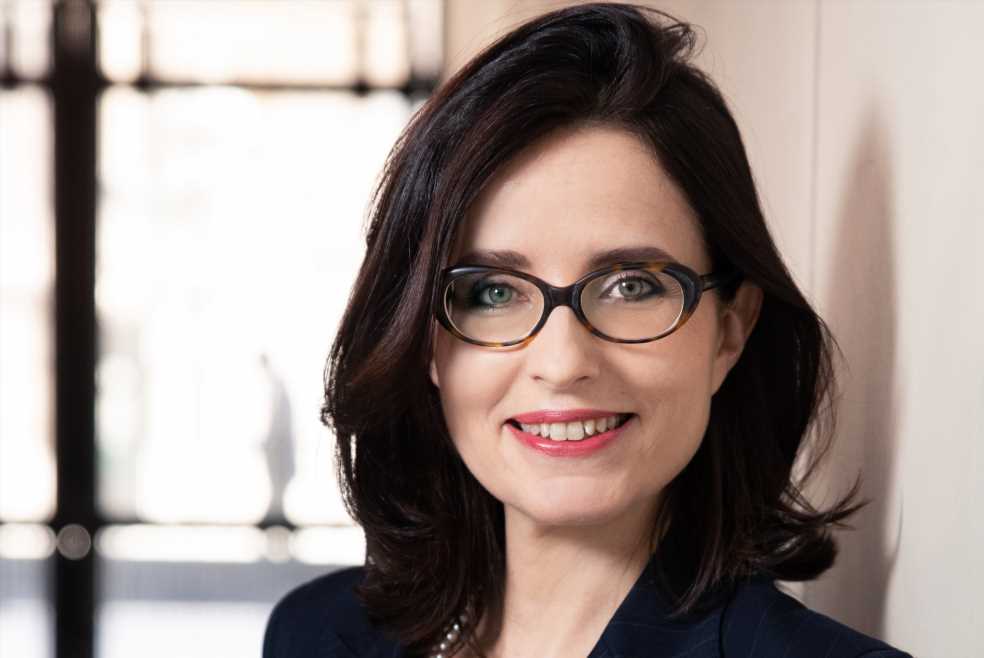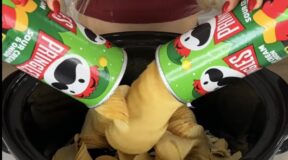PARIS — LVMH Moët Hennessy Louis Vuitton unveiled its targets on the environmental front Thursday, emphasizing a focus on offering products with a minimal environmental footprint by 2030.
“Those of you who know me know that I’m a bit of a specialist in circular economy — at any rate, that I believe strongly in this new economic model — and we are applying it and interpreting it in a very specific manner,” said Hélène Valade, group environmental development director at LVMH.
She noted that this emphasis on circular economy, applied to the luxury industry, allows for an inventive approach to materials.
It starts with the conception of products, and choosing the materials to make them, she explained, citing materials that have been recycled or come from regenerative agriculture as examples.
“There is a lot of innovation in this field of eco-design,” she said.
As part of a series of targets unveiled Thursday as part of its so-called “Life 360” program, the group plans for all of its new products, by 2030, to come from eco-design — which it described as being produced with a minimal environmental footprint from the extraction of materials to their transformation.
Luxury groups have stressed the longevity of their products to shore up their environmental credentials, and Valade expanded on this, noting plans to bulk up services for clients like repair and polishing, as well as upcycling and recycling precious materials like leather and fur.

Related Gallery
All of the Fashion at the 2021 BAFTA Awards
“What is driving us, it’s not secondhand but it’s a second life for our products, both for our clients and for us,” she added.
Offering examples of the group’s approach, the executive cited upcycled pieces from luxury brands in the group, like upcycled sneakers designed by Virgil Abloh for Louis Vuitton’s spring collection, and a woven leather handbag from Loewe made from leather scraps.
“It’s a new type of luxury that we would like to see emerge, a cleaner form of luxury that’s less about abundance, and that has a different relationship with time and nature,” explained the executive.
Packaging is another area the group addressed Thursday, pledging not to use any plastic that is not recycled by 2026.
The group also said it would beef up efforts in the area of transparency.
“Traceability is absolutely crucial, at the same time it’s extremely complex,” she said.
The executive defined the term as offering a view on the entire value chain of primary materials — “from the field to the store” — she said, noting that the stakes are different when it comes to leather or grapes. The group aims for all products to come with a system to provide information for clients by 2026. By 2030, the group pledges to have a specific traceability system for each type of primary material, using technology like blockchain.
“This will allow us to devise systems for providing information to all of our clients — we are quite advanced but we’d like to reinforce transparency,” she said, citing Guerlain’s Bee Respect platform, and a scan system at Patou whereby a QR code links to information about the makeup of an item of clothing.
“This is a direction that will be reinforced even more through Life 360,” said Valade.
The group said through its Life 2020 program, it has increased the proportion of renewable energy use in the group to 40 percent, reduced energy consumption of its stores by 31 percent, and recast packaging, with an enveloping film on Ruinart Champagne bottles for example. In terms of sourcing, the bulk of diamonds and gold used by the group are certified by the Responsible Jewellery Council.
When it comes to the climate, the group, which has calculated its carbon footprint at 4.8 million tons of CO2 equivalent, seeks to reduce greenhouse gases by 50 percent by 2026, compared to a baseline from 2019, by using renewable energy, and cutting scope 3 emissions by roughly half in the next 10 years.
Asked why objectives were set at time frames of three, six and 10 years, Valade noted that it was important to have various meeting points to concentrate on different subjects at specific times.
“The crisis has affected our relationship to time, and there are some subjects we felt we absolutely needed to speed up — 2023 seemed like an important date,” she said.
Meanwhile, some objectives call for a longer period, she added.
Asked about the environmental impact of physical fashion shows versus digital presentations, the executive said that, along with the Fédération de la Haute Couture et de la Mode, they are working on calculating the impact of the various formats.
“What is clear is that digital shows have a real environmental impact, so this will have to be compared in a very rigorous manner because we can’t say that digital fashion weeks don’t have an impact, we need to be able to evaluate the proportion compared to a traditional fashion week and we’ll happily debate it then,” she said.
She added that the economic contribution to the local economy, and the fashion ecosystem also needed to be taken into account, noticing that fashion week events serve to help young designers boost their notoriety.
“Our approach to fashion week is to consider it in function of its contribution to the environment, the economy, to culture, too, of the place where the fashion week is happening. This seems very important to us — that’s why it’s a subject we’re working on extensively,” said Valade.
Valade said LVMH was working to reinforce sharing environmental innovations between brands of the group, through working groups on subjects like regenerative agriculture and packaging.
“Innovation is shared, and we are doing everything we can to reinforce sharing,” she said.
“LVMH serves as magnificent grounds for a circular economy,” she said, citing a start-up that has emerged from an internal program called Dare that has resulted in a platform for a brand’s unused fabrics to be purchased by another label, set to be revealed at the end of the month.
Asked if the group could get involved in the secondhand market, Valade emphasized a focus on making the group’s products last.
“What makes sense to us is to push the durability to the extreme, with services to give our products and materials a second life, with upcycling, and relooking some of our pieces, either directly by our creative directors or because clients bring back objects that we give a second life to,” she said.
“Luxury is like a sphinx that is constantly being reborn, that is in this movement of perpetual reinvention, at the service of something that lasts and is a bit eternal,” added the executive.
Source: Read Full Article





